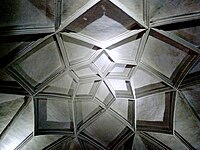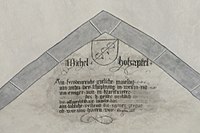
Gothic architecture is an architectural style that was prevalent in Europe from the late 12th to the 16th century, during the High and Late Middle Ages, surviving into the 17th and 18th centuries in some areas. It evolved from Romanesque architecture and was succeeded by Renaissance architecture. It originated in the Île-de-France and Picardy regions of northern France. The style at the time was sometimes known as opus Francigenum ; the term Gothic was first applied contemptuously during the later Renaissance, by those ambitious to revive the architecture of classical antiquity.

Cologne Cathedral is a cathedral in Cologne, North Rhine-Westphalia belonging to the Catholic Church. It is the seat of the Archbishop of Cologne and of the administration of the Archdiocese of Cologne. It is a renowned monument of German Catholicism and Gothic architecture and was declared a World Heritage Site in 1996. It is Germany's most visited landmark, attracting an average of 6 million people a year. At 157 m (515 ft), the cathedral is the tallest twin-spired church in the world, the second tallest church in Europe after Ulm Minster, and the third tallest church of any kind in the world.

Güstrow is a town in Mecklenburg-Vorpommern in north-eastern Germany. It is capital of the Rostock district; Rostock itself is a district-free city and regiopolis.

Aachen Cathedral is a Catholic church in Aachen, Germany and the cathedral of the Diocese of Aachen.
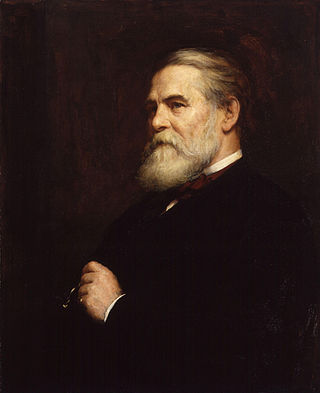
John Loughborough Pearson was a British Gothic Revival architect renowned for his work on churches and cathedrals. Pearson revived and practised largely the art of vaulting, and acquired in it a proficiency unrivalled in his generation. He worked on at least 210 ecclesiastical buildings in England alone in a career spanning 54 years.

Bruck an der Mur is a city of some 15,970 people located in the district Bruck-Mürzzuschlag, in the Austrian state of Styria. It is located at the confluence of the rivers Mur and Mürz. Its manufacturing includes metal products and paper. Bruck is located on the Graz to Vienna main line, and is an important regional rail junction.

Mainz Cathedral or St. Martin's Cathedral is located near the historical center and pedestrianized market square of the city of Mainz, Germany. This 1000-year-old Roman Catholic cathedral is the site of the episcopal see of the Bishop of Mainz.

St Peter's Cathedral is a Roman Catholic church and former cathedral in Worms, southern Germany.

Speyer Cathedral, officially the Imperial Cathedral Basilica of the Assumption and St Stephen, in Latin: Domus sanctae Mariae Spirae in Speyer, Germany, is the seat of the Roman Catholic Bishop of Speyer and is suffragan to the Roman Catholic Archdiocese of Bamberg. The cathedral, which is dedicated to St. Mary, patron saint of Speyer and St. Stephen is generally known as the Kaiserdom zu Speyer. Pope Pius XI raised Speyer Cathedral to the rank of a minor basilica of the Roman Catholic Church in 1925.

Reformierte Kirche Greifensee, is a church and a listed heritage building in the municipality of Greifensee, Canton of Zürich, Switzerland.

Heilig-Geist-Kirche is a Gothic hall church in Munich, southern Germany, originally belonging to the Hospice of the Holy Ghost.
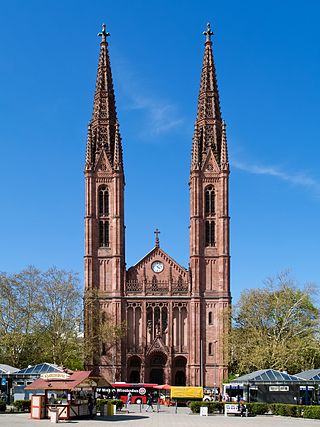
St. Bonifatius in Wiesbaden, Germany, is the central Catholic parish and church in the capital of Hesse. The present building was designed by architect Philipp Hoffmann in Gothic Revival style and built from 1844 to 1849. Its twin steeples of 68 m (223 ft.) dominate the Luisenplatz. The parish is part of the Diocese of Limburg.

Rheingauer Dom is the colloquial name for the Catholic parish church in Geisenheim, Germany. Officially Pfarrkirche Heilig Kreuz, the large church in the Rheingau region is called Dom although it was never a bishop's seat. The present building was begun in the 16th century, but major features such as an expansion of the nave from three to five vaults, the towers, the organ and several altars were added in the 19th century. The parish is part of the Diocese of Limburg.

"Nun bitten wir den Heiligen Geist" is the title of several hymns in German. The first is one of the oldest hymns in the German language: a 13th-century leise. Subsequent versions expanded upon the leise; the original hymn became the new version's first stanza, and it now used melodies derived from its medieval tune. The Protestant reformer Martin Luther expanded the leise in 1524, and different Catholic versions were published between 1537 and 1975.

Herz Jesu Fechenheim is a Catholic church in the suburb Fechenheim of Frankfurt am Main, Hesse, Germany. The parish church of the Fechenheim congregation is part of the Roman Catholic Diocese of Limburg. On 1 January 2015 the parish became a Kirchort, part of the parish St. Josef Frankfurt am Main.
Jörg Streli was an Austrian architect and academic teacher at the Innsbruck University. With two colleagues, as the firm Heinz & Mathoi & Streli, he built private homes in the alpine landscape of Tyrol, schools, offices and public buildings, among others. He was also president of the architecture section of the Ingenieur- und Architektenkammer für Tirol und Vorarlberg.
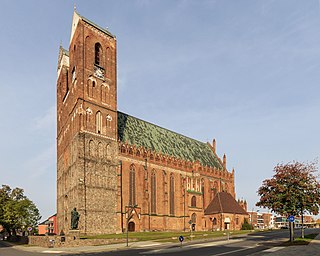
The Marienkirche in Prenzlau, Brandenburg, Germany, is the main Protestant parish church in the town, and is one of the most ornate churches of the Brick Gothic style in northern Germany. The church is a listed building.

Philipp Harnoncourt or Philipp Graf de la Fontaine und d'Harnoncourt-Unverzagt was an Austrian theologian, priest and musician. Born into a noble family, he grew up in Graz and decided to become a priest at age 17. He studied in Graz and Munich. In 1963 he founded a department of church music at the later Kunstuniversität Graz. He was appointed professor at the University of Graz in 1972 and was head of the institute of liturgics, Christian art and hymnology until his retirement in 1999.
Franz Harnoncourt, or Harnoncourt-Unverzagt is an Austrian jurist, CEO of the Kastner & Öhler department store in Graz, and president and member of the advisory board of the Grazer Wechselseitige Versicherung.
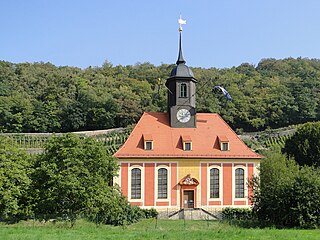
The Protestant Vineyard Church "Zum Heiligen Geist" is a baroque village church in the Dresden district of Pillnitz, named after its location in the Royal Vineyard. It is not to be confused with the Vineyard Church built in the 20th century in the Trachenberge district of Dresden.




